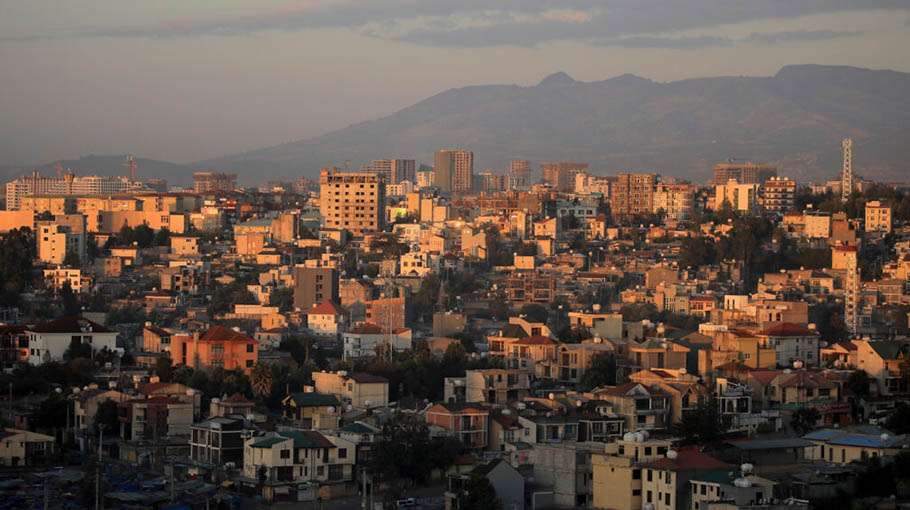Debt cancellation not a cure-all for debt-distressed Asia

The Paris Club, an informal forum of 22 creditor nations that deals with debtor countries’ payment difficulties, reached a consensus in March 2024 on debt cancellation for Somalia under the Heavily Indebted Poor Countries (HIPC) Initiative. This treatment reduced over US$2 billion, 99 per cent of Somalia’s total debt owed to Paris Club creditors. This debt cancellation may have implications for debt-distressed developing economies in Asia.
Somalia is among the least developed countries in the world. It has suffered from decades of conflict, adverse climatic conditions, disease outbreaks and poverty. It was once considered a ‘failed state’.
In Asia, countries comparable to Somalia in terms of external debt burden are Laos and Papua New Guinea. The International Monetary Fund assesses Laos as being in debt distress and Papua New Guinea as having a high risk of debt distress. Neither country has requested debt cancellation, but both are struggling to service external debt, given their low levels of foreign exchange reserves and structural weaknesses.
Somalia’s 2022 external debt stock was 52 per cent of its gross national income and entirely public and publicly guaranteed. Somalia owed 74 per cent of public and publicly guaranteed debt to bilateral creditors such as the United States, Russia and France — Paris Club permanent members — and 26 per cent to multilateral creditors.
Laos owes external debt equivalent to 127 per cent of its gross national income at the end of 2022. Almost two-thirds is public and publicly guaranteed debt, with half owed to China and the remainder to other bilateral, multilateral and private creditors roughly by equal share.
Papua New Guinea’s 2022 external debt accounts for 64 per cent of its gross national income. More than half is private nonguaranteed debt owed mostly to private creditors. The remainder is public and publicly guaranteed debt owed to Australia (19 per cent), China (17 per cent) and Japan (7 per cent), as well as to multilateral and private creditors at 50 per cent and 8 per cent, respectively.
Unlike Somalia, Laos and Papua New Guinea are ineligible for debt cancellation under the HIPC Initiative and the Multilateral Debt Relief Initiative. One of the eligibility criteria for support under the HIPC Initiative is that the country is facing an unsustainable debt situation after the full application of traditional debt relief mechanisms. Neither country has ever resorted to Paris Club debt treatment, except for Papua New Guinea’s use of debt treatment under the Debt Service Suspension Initiative at the early stages of the COVID-19 pandemic in 2020.
Creditor composition is a crucial factor in dealing with debt payment difficulties. The larger the share of any particular creditor, the more significant its impact. The more variety of creditor categories, the more complicated the deal can be. Geopolitical factors come into play when creditors beyond the Paris Club, such as China, are involved.
Somalia’s debt composition, with the significant share owed to the Paris Club and multilateral creditors, facilitated debt relief efforts led by traditional creditors under the HIPC Initiative, which resulted in debt cancellation.
For Laos, the most effective way to mitigate debt distress is to conclude a bilateral debt restructuring deal with China, its largest creditor. Outright debt cancellation would reduce the debt burden. But debt restructuring with a significant net present value reduction is the most feasible option because face-value debt cancellation is not preferred by China. The agreement could have favourable credit rating implications for Laos, enabling less costly rollover of maturing bonds owed to private investors and facilitating future loans from other sources.
Papua New Guinea’s private nonguaranteed debt, which is owed mostly to private creditors, is typically connected to project finance-based mining and liquefied natural gas projects. Such debt is not directly under the government’s auspices. This debt composition reflects the enclaved nature of the resource sector.
If the Papua New Guinean government faces payment difficulties, the challenge would be dealing with its public and publicly guaranteed debt. This entails an equity challenge to deal with various categories of creditors known as comparability of treatment — a guiding principle of the Paris Club.
The Papua New Guinean government’s exposure to various categories of creditors could complicate the debt restructuring process. Private creditors may hold the sovereign debtor to ransom to minimise their loss sharing. Multilateral debt cannot be rescheduled or cancelled due to multilaterals’ de facto preferred creditor status. China’s preference for a bilateral deal and frustration over the claimed lack of fair burden sharing by multilateral and private creditors may also derail the process.
Despite the HIPC Initiative’s intention to reduce poor countries’ external debt to sustainable levels, 13 out of the 37 beneficiaries of debt cancellation are now assessed as having a high risk of external debt distress and five countries are in debt distress.
Such a disappointing track record suggests that debt cancellation is not a panacea and can create a moral hazard for both the debtor and the creditor. Due to poor countries’ myopia amid crushing external debt crises, debt tends to accumulate over the years to unsustainable levels.
The most feasible and durable option for debt-distressed economies in Asia is a debt restructuring approach equipped with incentives for sound debt management instead of outright debt cancellation.
Toshiro Nishizawa is Professor at the Graduate School of Public Policy, The University of Tokyo.
Source: East Asia Forum




